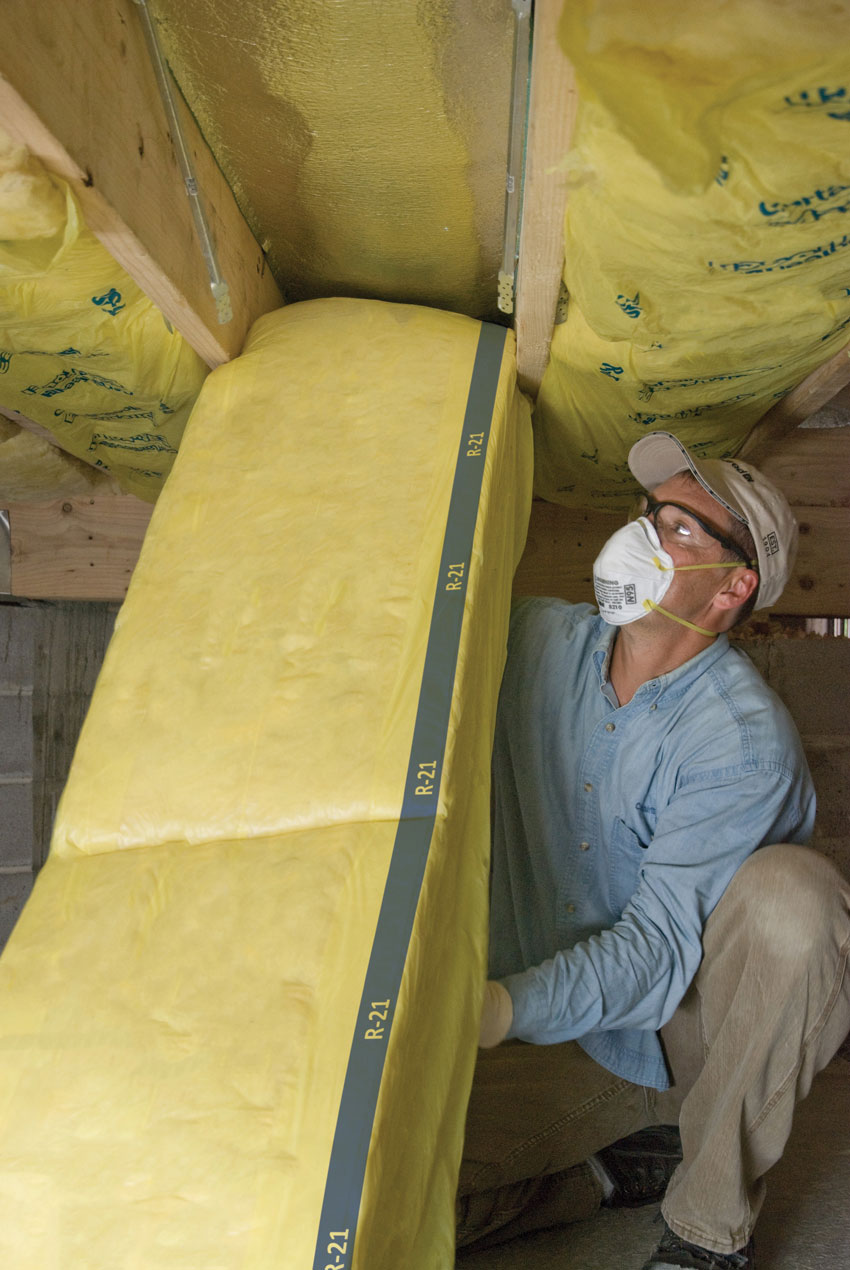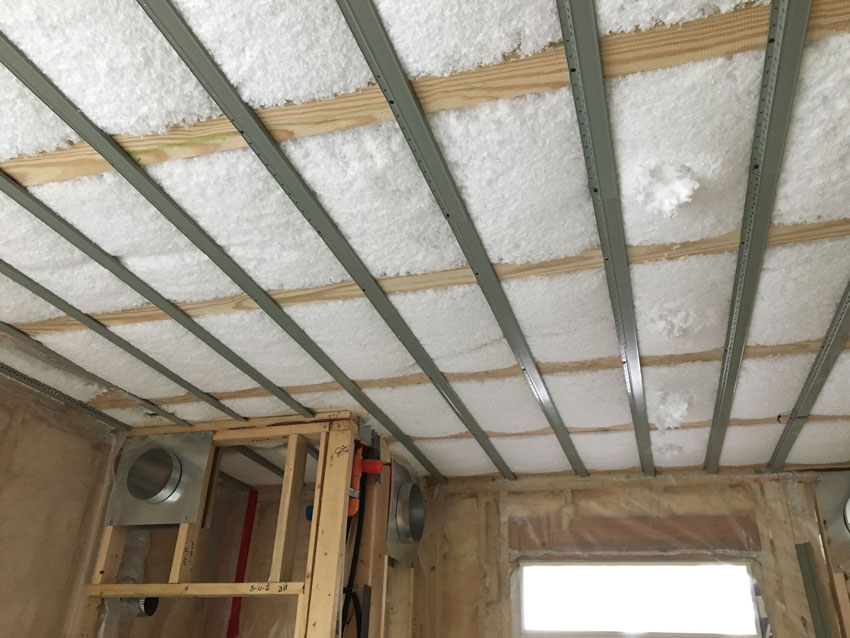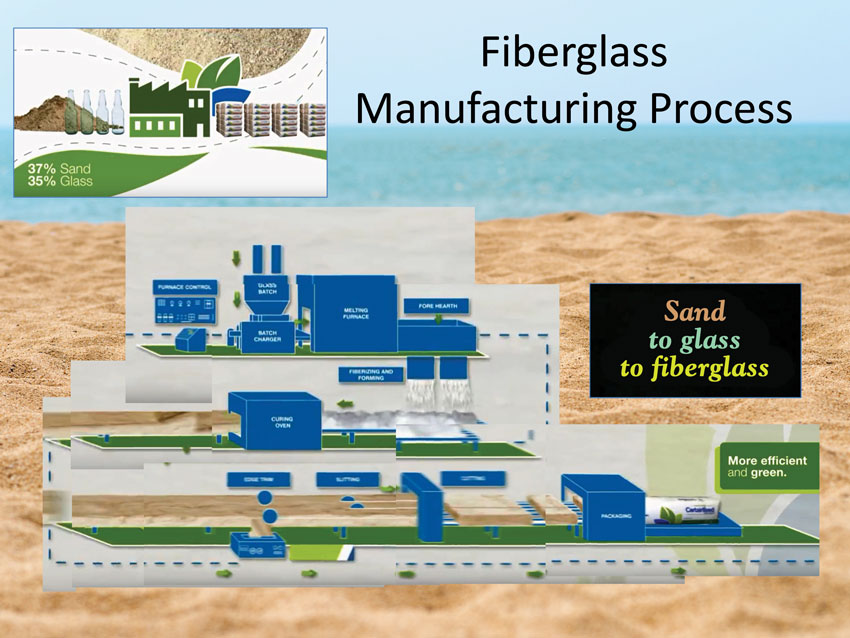Fire Prevention in the Modern Era
Specifying the Most Appropriate Insulation
Fire safety begins with good design. As we touched on earlier, smoke inhalation accounts for the majority of fire-related deaths, so building codes require that many building products and assemblies resist both flame spread and smoke development for extended periods of time.
Let’s look at an assembly from the perspective of a building in which a fire has started. There are two different sets of consideration before and after flashover has occurred. Before flashover, you want products that will not contribute fuel to the fire, that will not contribute smoke, and that will not help spread flames. Once flashover occurs, the goals change. At this point, there is likely no escape from the room in which the fire began; instead, the priorities shift to preventing the fire from spreading and trying to save the building.
Fiberglass and mineral wool have similar attributes and benefits when it comes to fire-related requirements. Neither is combustible, so neither will contribute fuel energy or smoke to a fire (although the facing of some faced batts is combustible).
Fiberglass insulation comes in faced and unfaced batts and encapsulated batts; it can be also be blown into a wall cavity or loosely blown into a space like an attic. When used in a flooring assembly between floors, it can in many cases also serve as an alternative to sprinkler systems. Mineral wool insulation is mostly available in unfaced batts and rigid boards. When specifying insulation products, the decision comes down to balancing fire-safety attributes with cost (both material and installation), energy performance, moisture management, and other factors. While each product has its pros and cons, fiberglass tends to have more flexibility in application.
Pros and Cons
Cost: Fiberglass products generally cost less per square foot than comparable mineral wool products. No investment in expensive machinery or specialized personal protective equipment is required to install fiberglass and mineral wool batts.

Photo courtesy of CertainTeed Insulation
Both fiberglass and mineral wool have excellent sound-absorbing characteristics, and both absorb up to 25 percent more sound than other insulation types. Fiberglass batts are easy to work with and install quickly.
Density: Mineral or stone wool is naturally dense, which gives products made from the material good dimensional stability and rigidity. Batts are easy to cut, and they fit snugly into cavities. Mineral wool products are also heavy, placing a greater literal burden on the installer.
Fiberglass is low density and lightweight—characteristics that make it easy to handle and transport. The material can be compressed without compromising its performance later, which makes for efficient transportation. In fact, a delivery truck can contain three times as much fiberglass material as mineral wool.
Sound attenuation: Both fiberglass and mineral wool have excellent sound-absorbing characteristics, and both absorb up to 25 percent more sound than other insulation types. Both provide a high level of sound control between interior rooms and between inside and outside.
It’s worth noting that the insulation thickness within the wall cavity is the most important property when it comes to sound attenuation, and that complete filling of the cavity provides the best performance between walls, for example. Air sealing is also critical, as a proper seal can block pathways through which sound can travel. (Note: You may come across the term sound transmission class (STC), which measures the ability of a wall, window, or other assembly to attenuate sounds. Insulation products do not achieve STC ratings on their own; this rating applies to whole assemblies.)
R-value: Both fiberglass and mineral wool products can be used to meet or exceed code requirements, and both can be part of high-performance envelopes. Mineral wool has a slightly higher R-value per inch, as it is a denser product, and blown-in products (both fiberglass and mineral wool) achieve higher R-values per inch than batts. In addition, these products do not lose R-value over time, and they do not settle once installed. To achieve their full insulating value, insulation materials should not be compressed when installed.
Sustainability: Both fiberglass and mineral wool products contain recycled materials, though percentages vary from manufacturer to manufacturer. A typical pound of fiberglass, rock, or slag wool insulation saves 12 times as much energy in its first year in place as the energy used to produce it, and it continues saving for the life of the building. Fiberglass and mineral wool batts can be removed from an existing building and reinstalled, making them among the few reusable forms of insulation. In addition, these products do not include chemical flame retardants. Many are GREENGUARD certified and can contribute to healthy indoor air quality, as they will not emit (or offgas) potentially harmful susbtances, such as volatile organic compounds (VOCs).
Moisture management: Being made of inorganic materials, neither fiberglass nor mineral wool support mold growth. Neither requires drying or curing time during installation. Consequently, they do not introduce moisture into the cavity, unlike cellulose and spray foam, which are typically applied wet.
Many fiberglass batts include specialty facings and/or advanced smart vapor retarders that help moisture escape the cavity. Finally, fiberglass insulation absorbs less than 1 percent of its weight in moisture, whereas cellulose absorbs 5 to 20 percent of its weight.
Insulation products that include a vapor retarder must be installed correctly in order to achieve optimal performance. Separate vapor retarders may be installed with unfaced batts, but this adds a step in installation. As we shall see, some manufacturers now offer “all-in-one” products that provide both superior moisture management and Class A fire resistance.
Innovative Fiberglass Insulation Solutions
Manufacturers of fiberglass insulation are offering products that address current trends in buildings—in particular, more stringent energy codes. These products are worth noting, as they may represent potentially less-expensive alternatives that do not sacrifice performance or fire safety.
Moisture management: The trend toward more airtight and energy-efficient building envelopes has created a need for products with better moisture management. In response, some manufacturers now offer fiberglass batts with Class A fire-rated facings. These “smart” vapor retarders block moisture when humidity is low in the cavity but increase its permeability when humidity is high to let moisture escape. Such products allow designers and builders to meet fire and airtightness requirements without sacrificing moisture management. These products are appropriate for walls, ceilings, and floors where a low flame spread vapor retarder is required or where insulation will be exposed, and for concealed applications in noncombustible construction.

Photo courtesy of CertainTeed Insulation
A passive protection system, like fire-rated insulation, can provide a cost-effective solution to installed sprinkler systems in midfloor applications.
Midfloor applications: Sprinklers are an active suppression measure that can help prevent a fire from getting out of control; however, the installation of sprinklers throughout buildings is expensive. Chapter 8 of NFPA 13: Installation of Sprinkler Systems addresses sprinkler requirements for commercial buildings. It recognizes the use of passive protection systems and includes specific exceptions for concealed spaces for which installation of sprinklers can be omitted. Chapter 8.15.1.2.7 states that concealed spaces filled with noncombustible insulation shall not require sprinkler installation. In simple terms, this means that in some conclealed spaces, like between floors in a multistory building, appropriately fire-rated insulation can be used as fire suppression mechanism rather than installing sprinkler systems. NAIMA recommends that the space above ceilings (between floors) be filled with either unfaced fiberglass or mineral wool batts, or with loose fill.
Plenum applications: NFPA 90A Section 4.3.10.2 requires materials exposed to the airflow in ceiling cavity plenums used for supply, return, or exhaust air from the occupied area to be noncombustible, limited combustible, or have an FSI not exceeding 25 and an SDI not exceeding 50. Products for these applications are required to have a Class A fire rating. Some fiberglass insulation manufacturers offer encapsulated fiberglass batts, which are wrapped in vapor-permeable polyethylene sheeting that controls dust and allows for easy handling. Encapsulated batts are easier to install in plenum locations, which are often overhead, as the batts are easier to slide and pull and create less dust. Unfaced ecapsulated batts are appropriate for any application that calls for unfaced batts or batts with a Class A rated facing.
Wrapping It Up
We’ve come a long way since the days of thatched roofs, wood chimneys, and narrow streets. Today, fire codes are in place primarily to establish requirements that provide a reasonable degree of safety from fire in buildings and structures. Though these requirements vary depending on building type and occupancy, the codes are generally concerned with flammability ratings of interior finish materials, combustibility of constructions and components, and the ability of a construction to resist exposure to fire. As we have seen, both fiberglass and mineral wool insulation can contribute to the construction of safe, energy-efficient, and comfortable buildings. Architects and designers can rest assured that by specifying these products, the occupants of their buildings are better protected in the event of fire.
Andrew A. Hunt, vice president, Confluence Communications, has 16 years of experience in green building and has produced more than 100 educational and technical publications. http://confluencec.com/

|
With the most comprehensive product line in the industry, CertainTeed has everything you need to satisfy even the toughest building codes and customer demands. It’s our mission to prepare you for fire safety on every job. For more information on CertainTeed’s innovative fire performance solutions, visit www.certainteed.com/fireperformance. |









